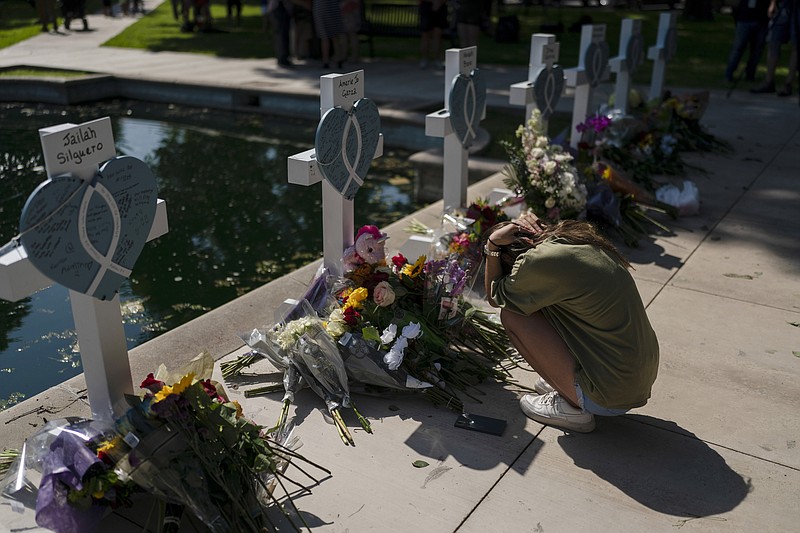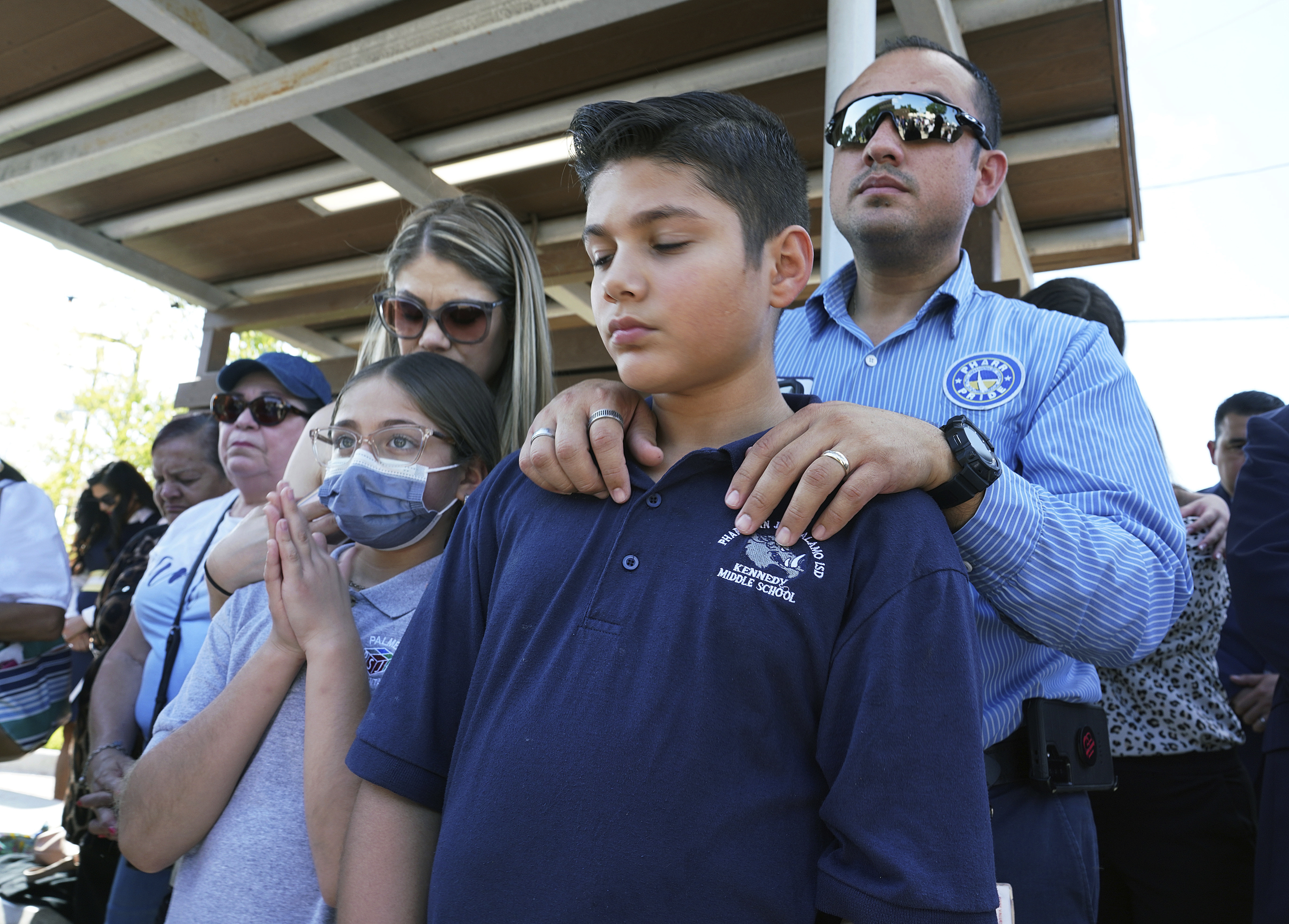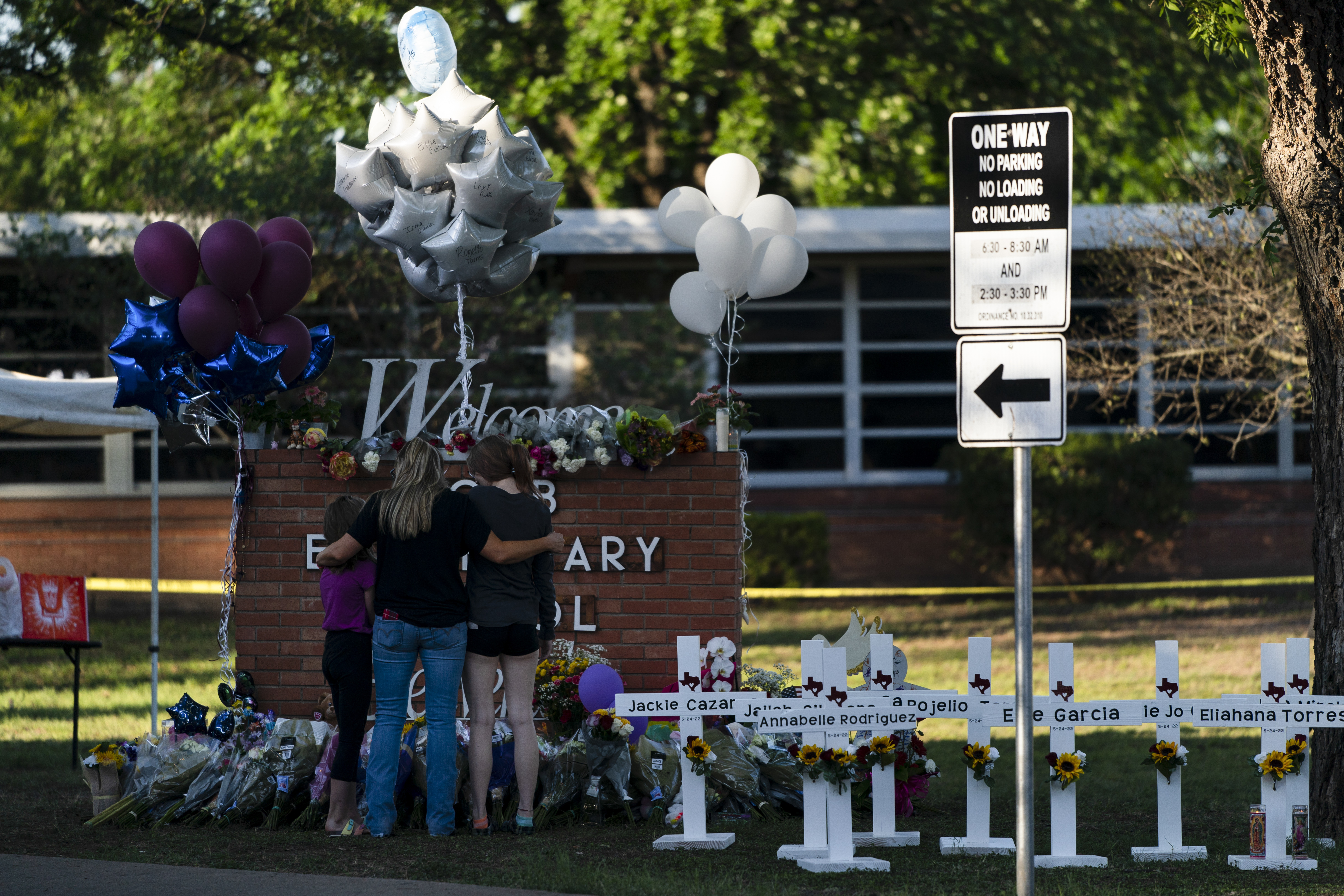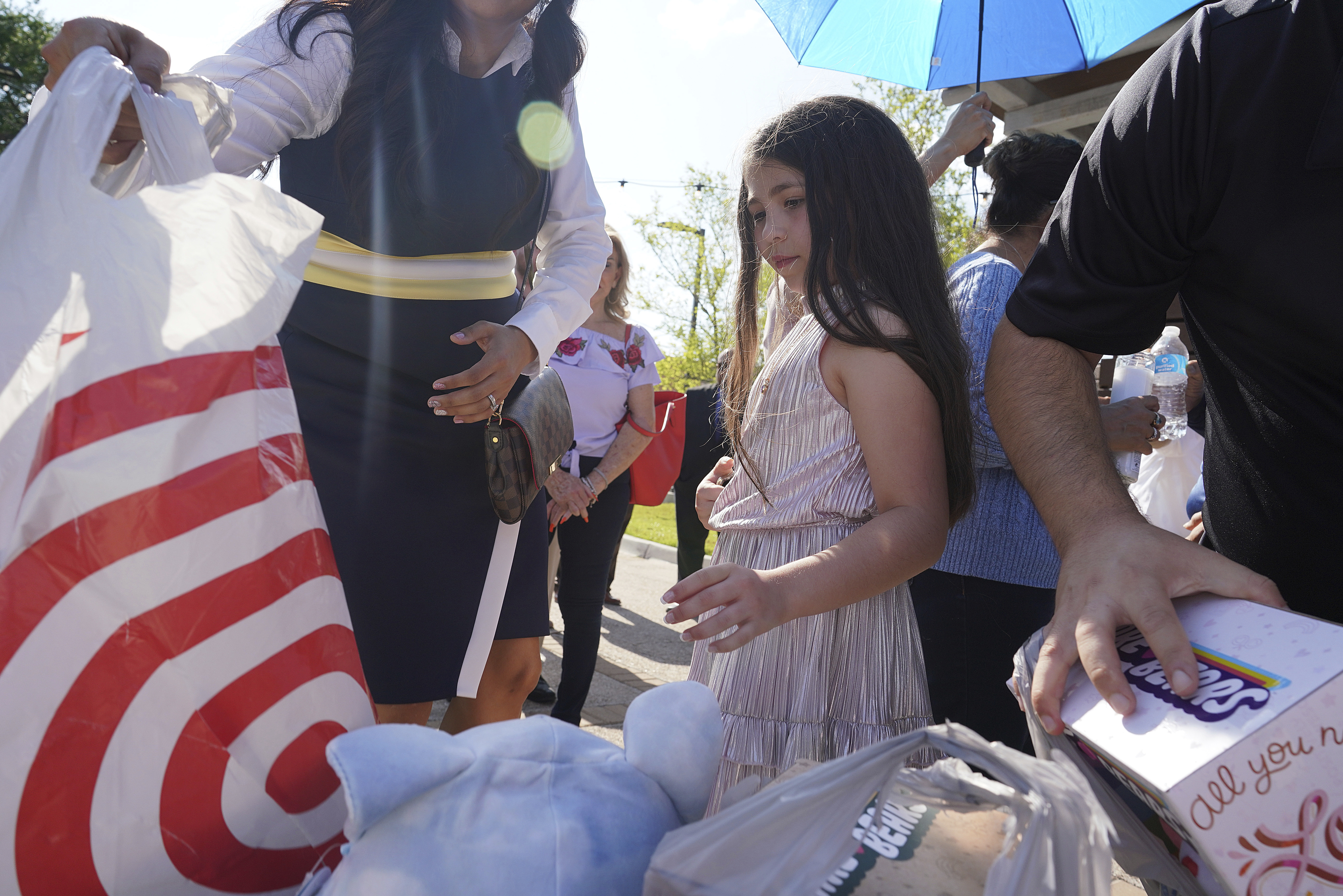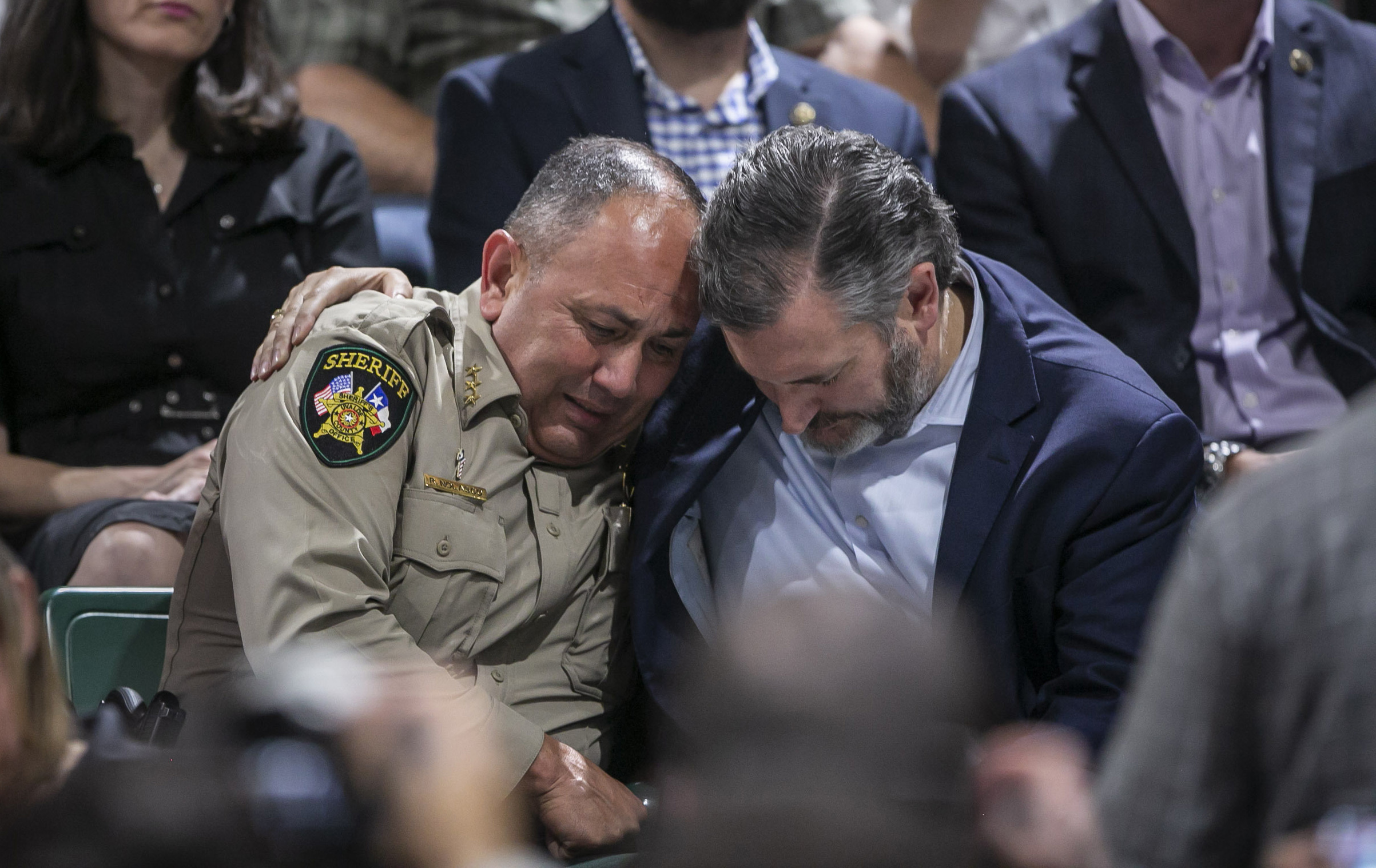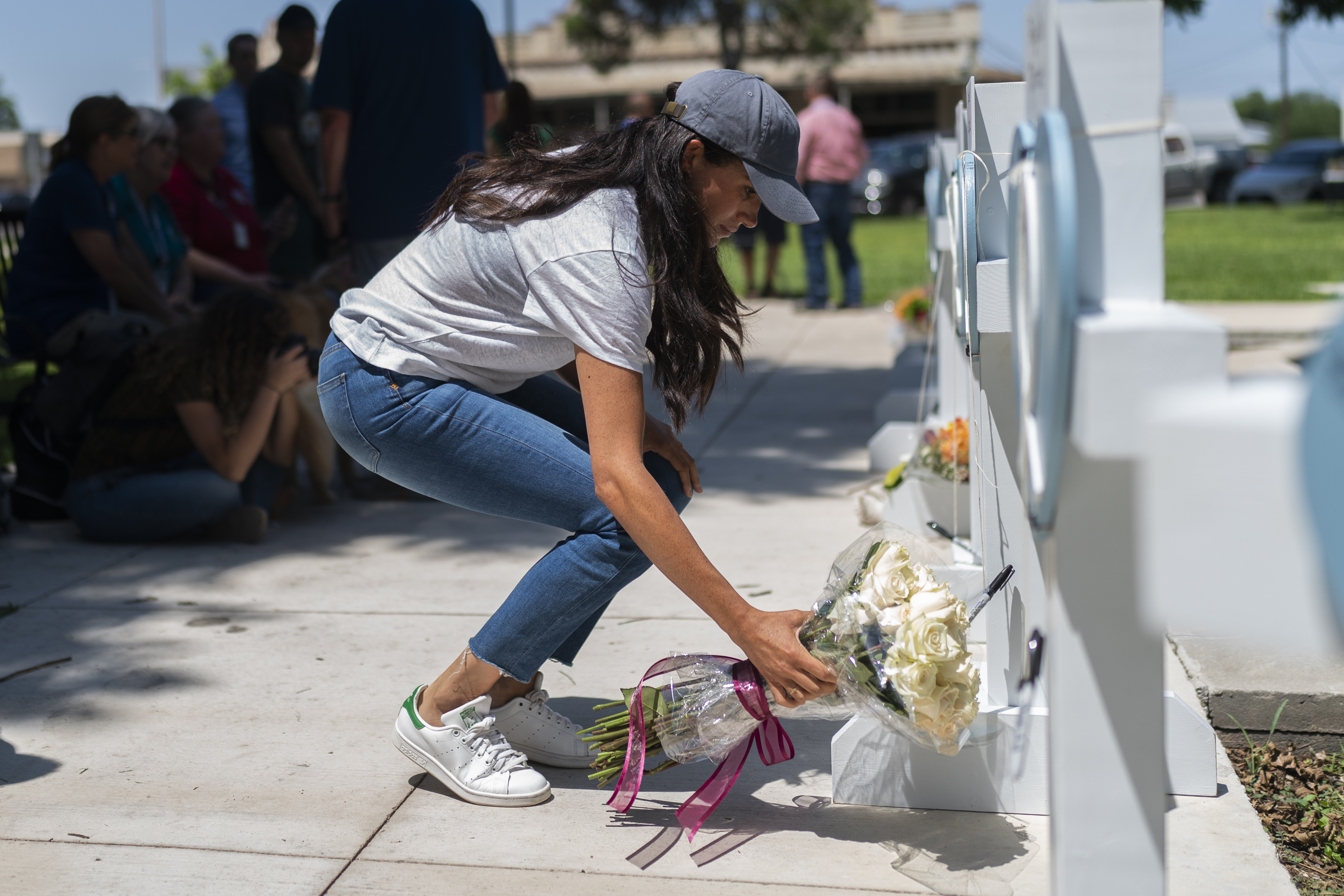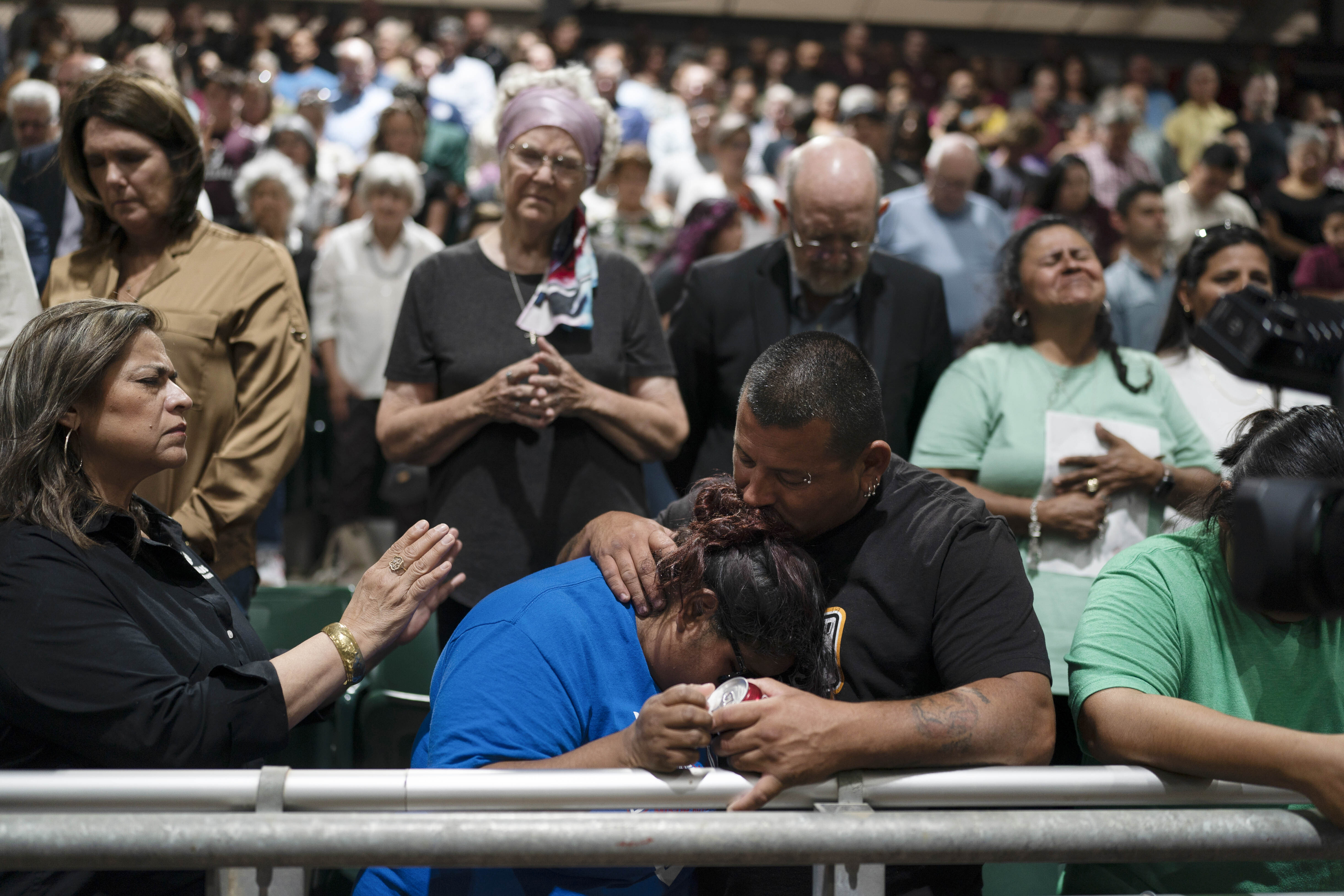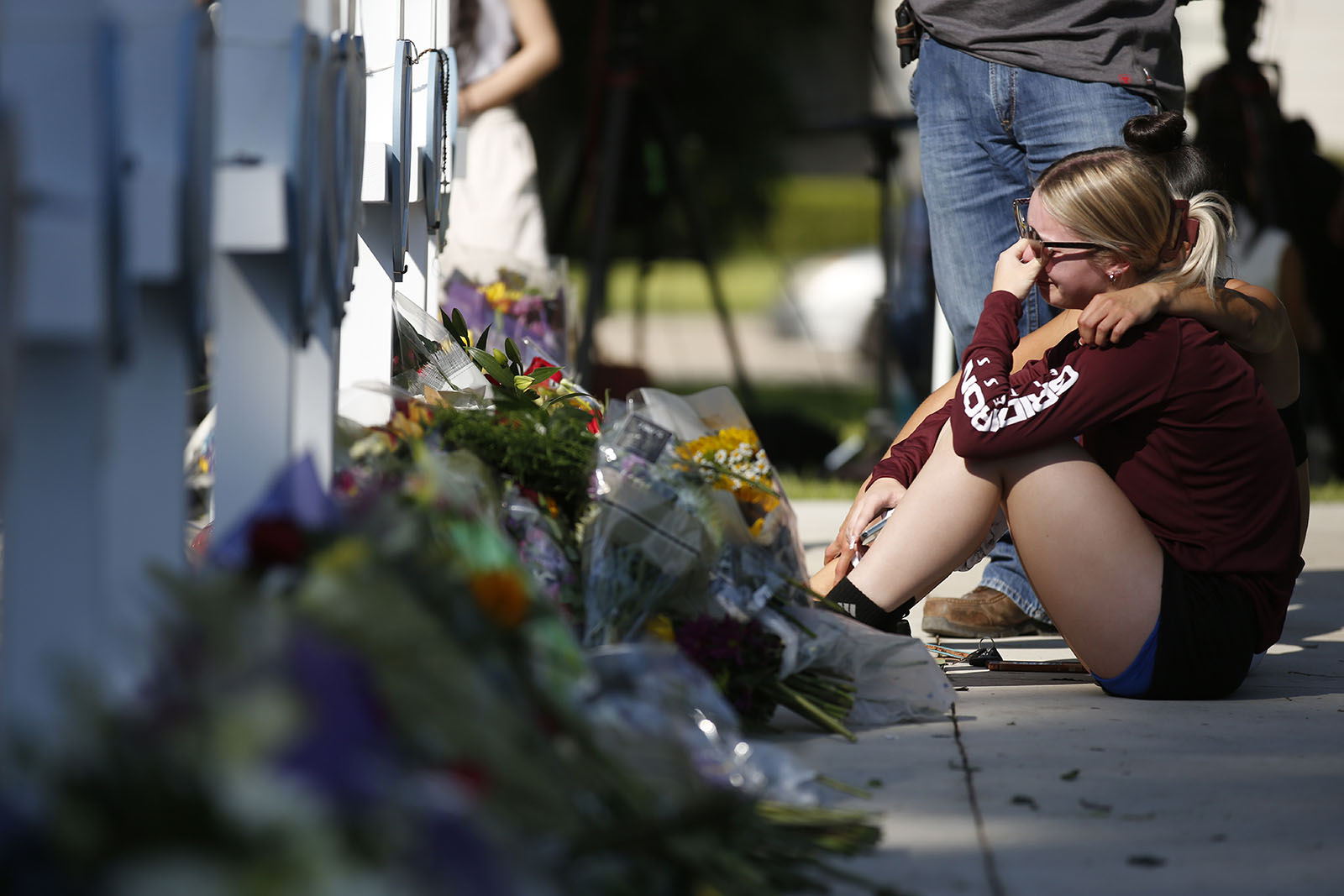UVALDE, Texas -- It was 11:28 a.m. when the Ford pickup slammed into a ditch behind the low-slung Texas school and the driver jumped out carrying an AR-15-style rifle.
Twelve minutes after that, authorities say, 18-year-old Salvador Ramos was in the hallways of Robb Elementary School. Soon he entered a fourth grade classroom. And there, he killed 19 schoolchildren and two teachers.
At 12:58 p.m., law enforcement radio chatter said Ramos had been killed and the siege was over.
What happened during those 90 minutes in a working-class neighborhood near the edge of the little town of Uvalde has fueled mounting public anger and scrutiny over law enforcement's response to Tuesday's rampage.
"They say they rushed in," said Javier Cazares, whose fourth grade daughter, Jacklyn Cazares, was killed in the attack. He raced to the school as the massacre unfolded. "We didn't see that."
On Thursday, authorities didn't directly answer questions about why officers had not been able to stop the shooter sooner, with Victor Escalon, regional director for the Texas Department of Public Safety, telling reporters he had "taken all those questions into consideration" and would offer updates later.
The media briefing, called by Texas safety officials to clarify the timeline of the attack, provided bits of previously unknown information. But by the time it ended, it had added to the questions surrounding the attack, including about the time it took police to reach the scene and confront the gunman, and the apparent failure to lock a school door he entered.
After two days of providing often conflicting information, investigators said that a school district police officer was not inside the school when Ramos arrived, and, contrary to their previous reports, the officer had not confronted Ramos outside the building.
Instead, they sketched out a timeline notable for unexplained delays by law enforcement.
After crashing his truck, Ramos fired on two people coming out of a nearby funeral home, Escalon said. He then entered the school "unobstructed" through an apparently unlocked door about 11:40 a.m.
But the first police officers did not arrive on the scene until 12 minutes after the crash and and did not enter the school to pursue the shooter until four minutes after that. Inside, they were driven back by gunfire from Ramos and took cover, Escalon said.
The crisis came to an end after a group of Border Patrol tactical officers entered the school roughly an hour later, at 12:45 p.m., said Texas Department of Public Safety spokesperson Travis Considine. They engaged in a shootout with the gunman, who was holed up in the fourth grade classroom. Moments before 1 p.m., he died.
Escalon said that during that time, the officers called for backup, negotiators and tactical teams, while evacuating students and teachers.
Michael Dorn, executive director of Safe Havens International, which works to make schools safer, cautioned that it's hard to get a clear understanding of the facts soon after a shooting.
"The information we have a couple of weeks after an event is usually quite different than what we get in the first day or two. And even that is usually quite inaccurate," Dorn said. For catastrophic incidents, "you're usually eight to 12 months out before you really have a decent picture."
Many other details of the case and the response remained unclear. The motive for the massacre -- the nation's deadliest school shooting since Newtown, Conn., almost a decade ago -- remained under investigation, with authorities saying Ramos had no known criminal or mental health history.
During the siege, frustrated onlookers urged police officers to charge into the school, according to witnesses.
"Go in there! Go in there!" women shouted at the officers soon after the attack began, said Juan Carranza, 24, who watched the scene from outside a house across the street.
Carranza said the officers should have entered the school sooner: "There were more of them. There was just one of him."
Border Patrol Chief Raul Ortiz did not give a timeline but said repeatedly that the tactical officers from his agency who arrived at the school did not hesitate. He said they moved rapidly to enter the building, lining up in a "stack" behind an agent holding up a shield.
"What we wanted to make sure is to act quickly, act swiftly, and that's exactly what those agents did," Ortiz told Fox News.
But a law enforcement official said that once in the building, the agents had trouble breaching the classroom door and had to get a staff member to open the room with a key.
Department of Public Safety spokesman Lt. Christopher Olivarez told CNN that investigators were trying to establish whether the classroom was, in fact, locked or barricaded in some way.
Cazares said that when he arrived, he saw two officers outside the school and about five others escorting students out of the building. But 15 or 20 minutes passed before the arrival of officers with shields who were equipped to confront the gunman, he said.
As more parents flocked to the school, he and others pressed police to act, Cazares said. He heard about four gunshots before he and the others were ordered back to a parking lot.
"A lot of us were arguing with the police, 'You all need to go in there. You all need to do your jobs.' Their response was, 'We can't do our jobs because you guys are interfering,'" Cazares said.
As for the armed school officer, he was driving nearby but was not on campus when Ramos crashed his truck, according to a law enforcement official.
Investigators have concluded that school officer was not positioned between the school and Ramos, leaving him unable to confront the shooter before he entered the building, the law enforcement official said.
PREPARED TO FAIL
In August 2020, law enforcement officers from five agencies converged inside the hallways of a school in Uvalde, Texas, their guns drawn, role-playing how they would halt a gunman.
The training, detailed in documents reviewed by The New York Times, was part of an overhaul of security preparedness in Uvalde -- and across much of Texas. Uvalde school officials were doubling their budget for security, updating protocols and adding officers to the district's Police Department. And the city's separate police force dispatched its SWAT team, in tactical gear, to learn the layout of school buildings.
But none of the extensive preparations halted the rampage of Ramos when he entered Robb Elementary School.
The carnage has renewed a decades-old debate about how to end the horror of U.S. school shootings, with many Texas political leaders once again calling for heightened school security measures. But others, pointing to devastation even on campuses that have invested heavily in security, said that such a singular focus could not stop a committed killer with access to weapons -- and that such efforts might actually provide a false sense of safety in the absence of gun control regulations and more robust investments in mental health.
After the shooting at Columbine High School in Colorado in 1999, Congress began providing federal dollars for campus officers, and officials made -- and remade -- security protocols inside schools, from lockdown training drills to elaborate identification requirements. Nationally, 19% of elementary school students, 45% of middle schoolers and 67% of high school students attend a school with a campus police officer, according to a 2018 report from the Urban Institute.
Still, there is little evidence nationally that the dollars poured into school security measures have decreased gun violence in schools, according to a 2019 study co-written by Jagdish Khubchandani, a professor of public health at New Mexico State University.
"These security measures are not effective," Khubchandani said this week. "And they are not catching up to the ease of access with which people are acquiring guns in the pandemic."
The nation's epidemic of school shootings has only grown worse, sometimes in situations where armed school officers have been present. An officer on duty at Marjory Stoneman Douglas High School in Parkland, Fla., in 2018 has been accused of hiding as a teenage gunman killed 17 people.
After a shooting at a high school in Santa Fe, Texas, left 10 people dead in 2018, state leaders pressed new plans aimed at enhancing school security. The plans emphasized detecting mental health troubles, expanding monitoring of social media for threats, providing training on shootings and increasing the presence of law enforcement officers at schools. Across the state, $100 million was budgeted for upgrades such as metal detectors, security systems, two-way radios and bullet-resistant glass.
Uvalde, a small community not far from the U.S.-Mexico border, was among the beneficiaries, getting a grant for $69,141.
About the same time, the school district was building up its own security. It hired two new police officers last year, expanding to a six-person force that serves about 4,000 students across several schools. The school system's spending on security and monitoring services more than doubled in the past four years, budget records show.
The district's security plan included two-way radios, threat assessment teams at each school and a policy of locking each classroom door. At Robb Elementary School, where the rampage took place Tuesday, officials described fencing enclosing the campus that was "designed to limit and/or restrict access to individuals without a need to be on the campus," district records said.
The school district's security training exercises in August 2020 included its own police officers, the Uvalde city police, the county sheriff's office and other local agencies.
"It was very successful," Pete Arredondo, chief of the school district's police force, wrote in a summary for district officials.
Officials from the school district did not respond to messages seeking comment Thursday.
Since the Columbine killings more than two decades ago, law enforcement training for shooting situations has evolved considerably. At the time, the emphasis was on making sure that officers secured a perimeter before moving in. Officers are now trained to disable a gunman as quickly as possible, without waiting for a tactical team or special equipment to arrive and before rescuing victims.
Mo Canady, executive director of the National Association of School Resource Officers, said that school officers had prevented many instances of violence that do not gain broad attention. He pointed to a National Policing Institute database that showed 120 cases of averted school violence between 2018 and 2020.
Canady said that his organization had trained several Uvalde school officers over the course of four years but that they were typically based at secondary schools, not elementary schools. He warned against jumping to conclusions about officers' actions Tuesday.
Storming a building too quickly could allow a gunman to escape, he said. And while capturing or killing a gunman is "Plan A," he said, containing the person to a particular space can be an effective "Plan B" to lessen the carnage.
The Texas Rangers have been investigating how local police officers responded to the shooting as part of a broader investigation into the massacre, state officials said Thursday.
The Uvalde school district, like many across the country, was also using measures connected to students' well-being in its efforts to prevent violence, documents showed. The district used software called Social Sentinel, which monitors students' social media posts for threats, and an app called STOPit, which allows anonymous reports of bullying.
Ron Avi Astor, an expert on school violence at UCLA, said that while emotional supports have improved school climate broadly, those strategies -- as well as the presence of campus police officers -- have been insufficient to prevent suicidal, deeply troubled young men from carrying out attacks.
The focus, he said, should be on referring high-risk individuals to mental health treatment while preventing them from buying or owning guns.
"We have to start talking about shooters and shootings differently," he added.
Like the schools in Uvalde, most schools in the United States hold lockdown drills. While some survivors of last year's shooting at Oxford High School in Michigan credited the trainings with helping them quickly escape the building, there is little evidence that the drills mitigate risk -- and lots of concern from parents, educators and mental health experts that they cause fear and anxiety for children.
There are some simple, inexpensive measures that are protective, according to those who have studied school shootings. One of them is keeping classroom doors locked, which was a district requirement in Uvalde.
It is not clear whether that practice was being followed at Robb Elementary on the day of the shooting. The shooting occurred after an awards ceremony, when relatives said they had come in and out of the building.
The Uvalde district's safety plan also described the use of the Raptor Visitor Management System, which scans visitor IDs and checks them against sex offender registries and lists of noncustodial parents.
At a news conference in Uvalde this week, Lt. Gov. Dan Patrick praised the district's security measures but suggested that limiting schools to a single entrance was an improvement worth considering.
Officials in Georgia and Virginia deployed additional officers to schools as a precaution, and Sen. Ted Cruz, R-Texas, suggested putting more armed police officers in schools. New York City, the nation's largest school district, said it would consider locking school doors after students arrive for the day. Los Angeles said it would reduce entry points for schools.
But Khubchandani questioned whether any of these measures would stop a next gunman.
"It's like medication for heart attacks while continuing to eat bad instead of eating healthy," he said. "You prevent this from happening or you don't."
Information for this article was contributed by Jake Bleiberg, Jim Vertuno and Elliot Spagat of The Associated Press and Mike Baker and Dana Goldstein of The New York Times.
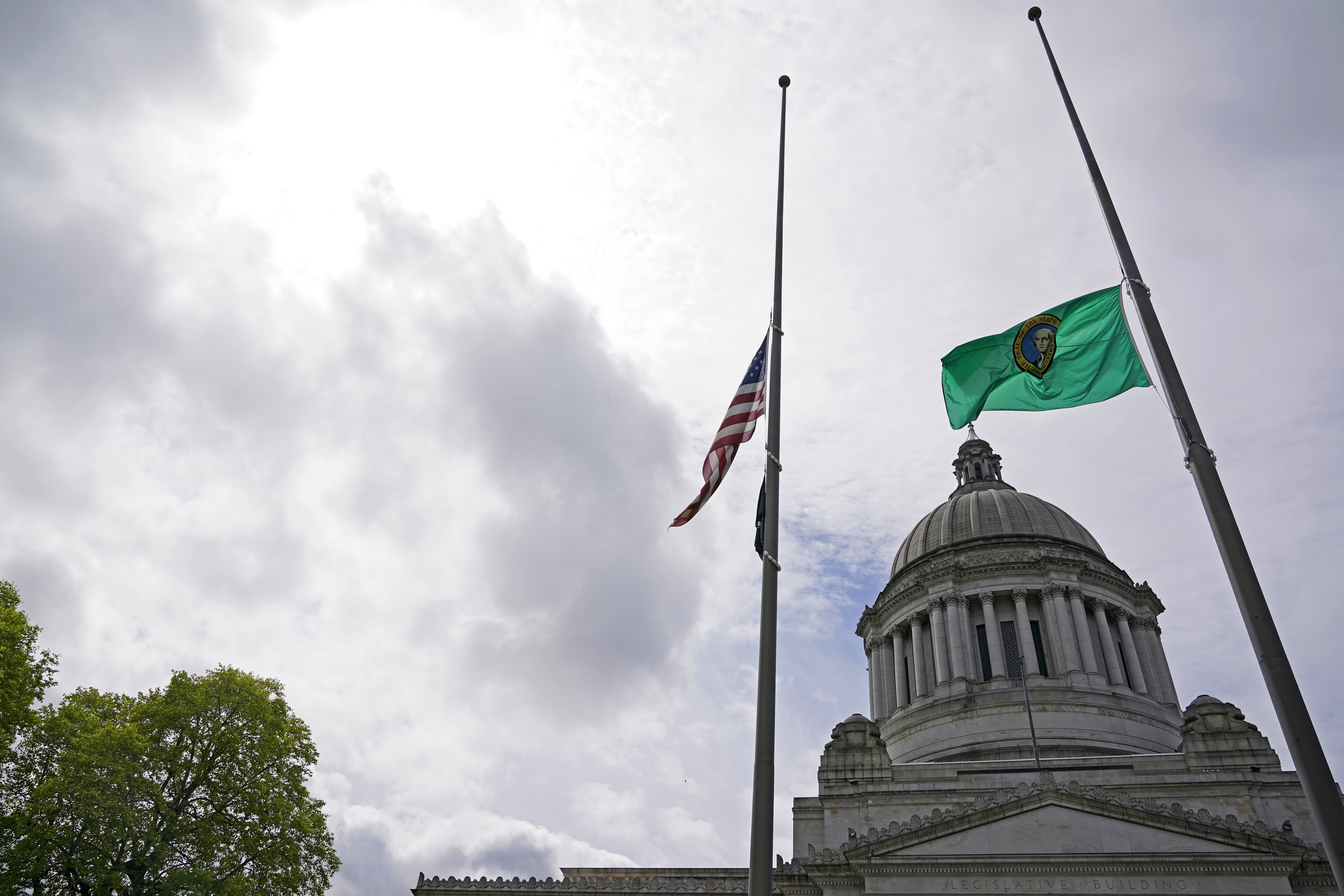 The U.S. and Washington state flags fly at half-staff in front of the Legislative Building at the Capitol in Olympia, Wash., Wednesday, May 25, 2022, in memory of the victims of the mass shooting in Uvalde, Texas. Washington Gov. Jay Inslee was quick to react to the carnage at a Texas elementary school, sending a Twitter message listing the gun control measures the Democratic-controlled state has taken. He finished with: “Your turn Congress.” (AP Photo/Ted S. Warren)
The U.S. and Washington state flags fly at half-staff in front of the Legislative Building at the Capitol in Olympia, Wash., Wednesday, May 25, 2022, in memory of the victims of the mass shooting in Uvalde, Texas. Washington Gov. Jay Inslee was quick to react to the carnage at a Texas elementary school, sending a Twitter message listing the gun control measures the Democratic-controlled state has taken. He finished with: “Your turn Congress.” (AP Photo/Ted S. Warren)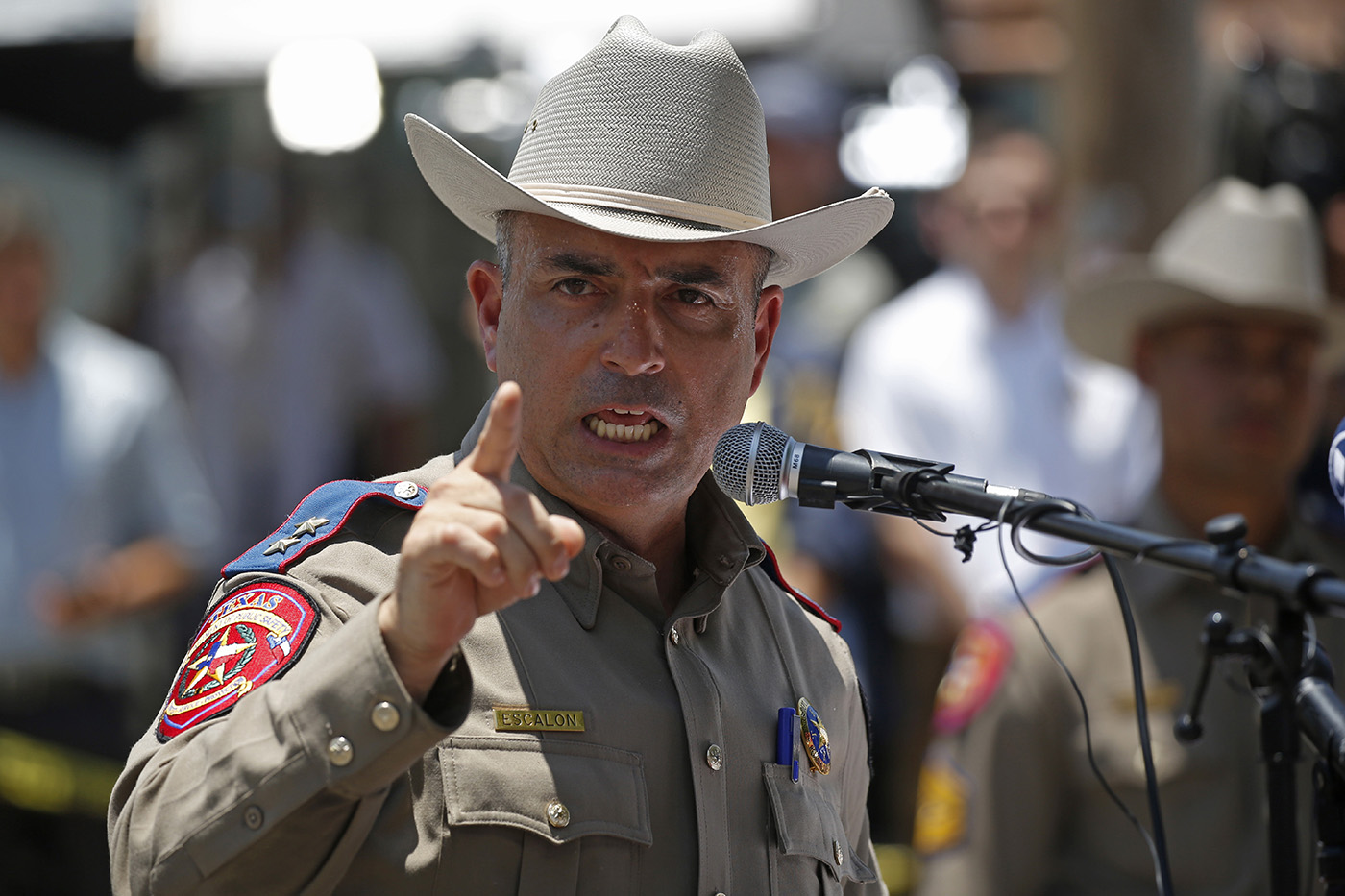 Victor Escalon of the Texas Department of Public Safety South, speaks at a news conference Thursday outside of Robb Elementary School in Uvalde, Texas. Asked why police officers took so long to stop the gunman, Escalon gave no answer but said he had “taken all those questions into consideration” and would offer updates later. (AP/Dario Lopez-Mills)
Victor Escalon of the Texas Department of Public Safety South, speaks at a news conference Thursday outside of Robb Elementary School in Uvalde, Texas. Asked why police officers took so long to stop the gunman, Escalon gave no answer but said he had “taken all those questions into consideration” and would offer updates later. (AP/Dario Lopez-Mills)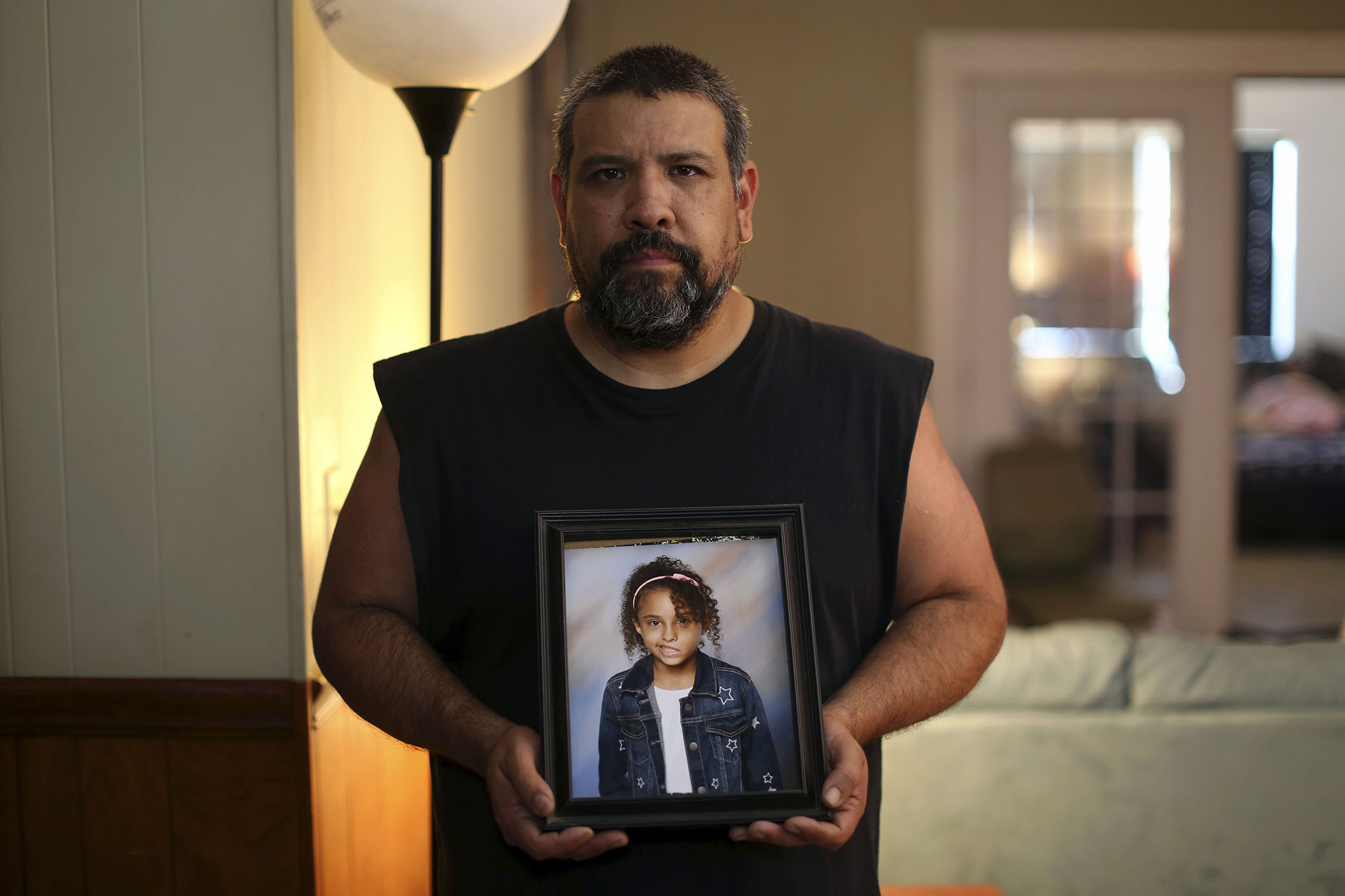 Vincent Salazar holds a photograph of his daughter, Layla, at his home in Uvalde, Texas on Thursday. Layla was killed in Tuesday’s shooting. Each morning as he drove her to school in his pickup, Salazar said, he would play “Sweet Child O’ Mine” by Guns N’ Roses and they’d sing along. (AP/Dario Lopez-Mills)
Vincent Salazar holds a photograph of his daughter, Layla, at his home in Uvalde, Texas on Thursday. Layla was killed in Tuesday’s shooting. Each morning as he drove her to school in his pickup, Salazar said, he would play “Sweet Child O’ Mine” by Guns N’ Roses and they’d sing along. (AP/Dario Lopez-Mills)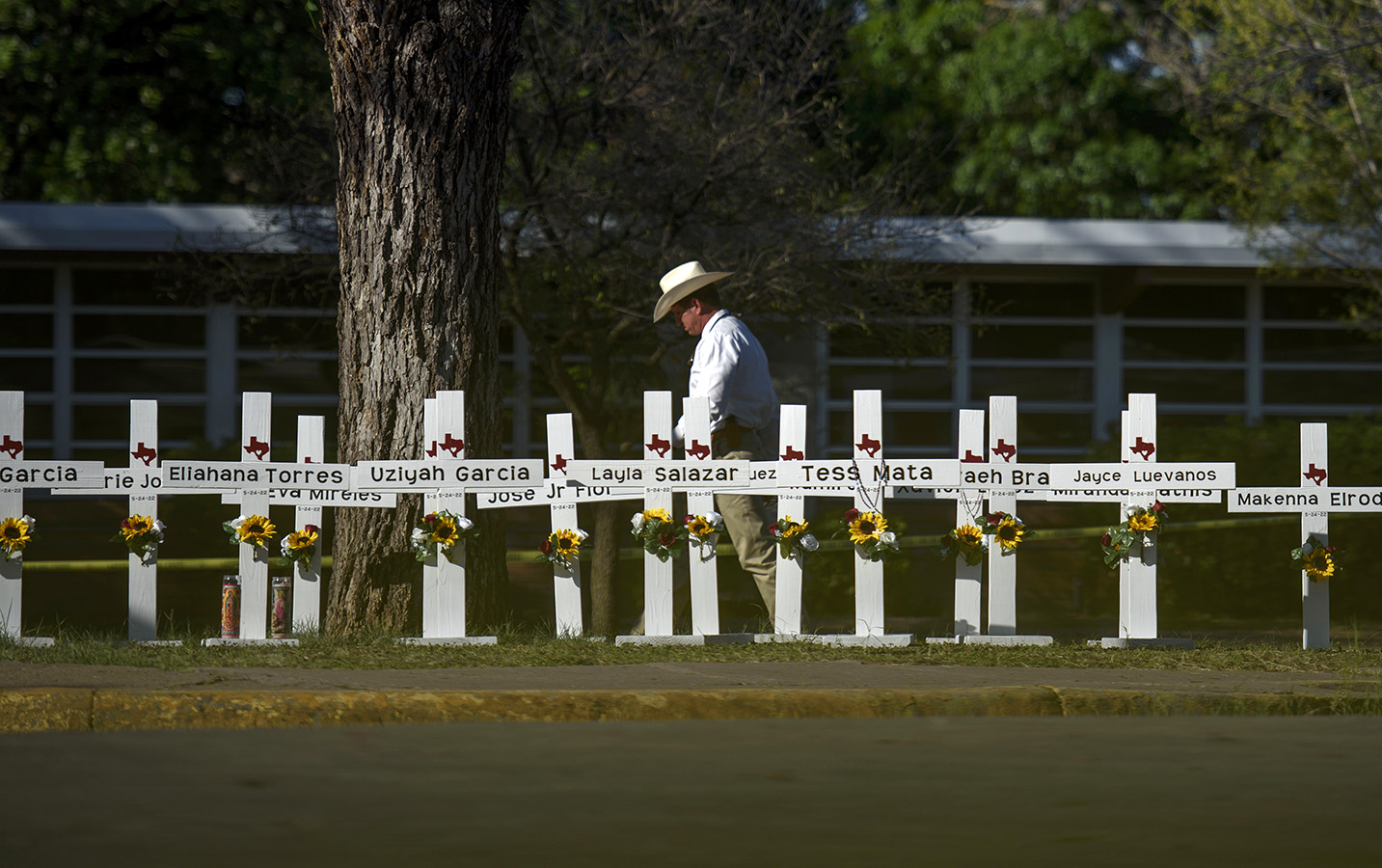 An investigator walks past crosses bearing the names of those killed in Tuesday’s mass shooting at Robb Elementary School in Uvalde, Texas, on Thursday, which was supposed to have been the last day of school. Instead, grieving relatives are planning funerals. More photos at arkansasonline.com/527uvalde/. (The New York Times/Callaghan O’Hare)
An investigator walks past crosses bearing the names of those killed in Tuesday’s mass shooting at Robb Elementary School in Uvalde, Texas, on Thursday, which was supposed to have been the last day of school. Instead, grieving relatives are planning funerals. More photos at arkansasonline.com/527uvalde/. (The New York Times/Callaghan O’Hare)Gallery: Scenes from Uvalde, Texas, day 3
